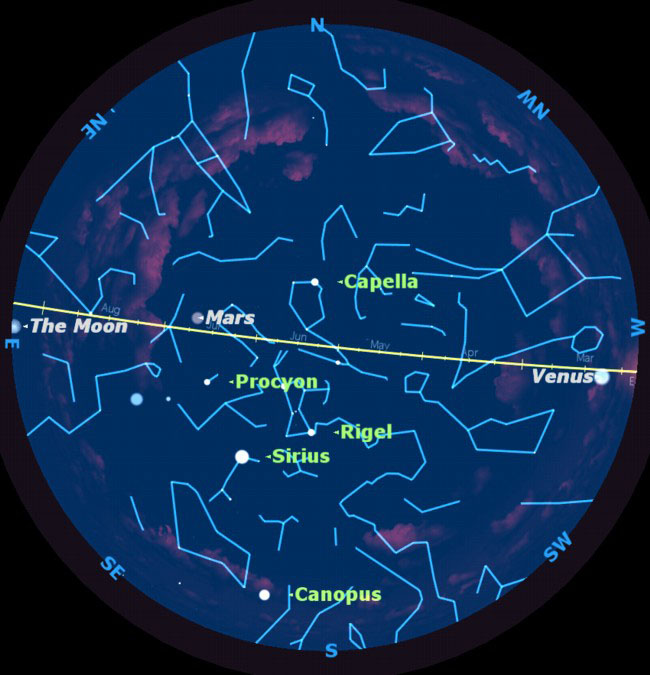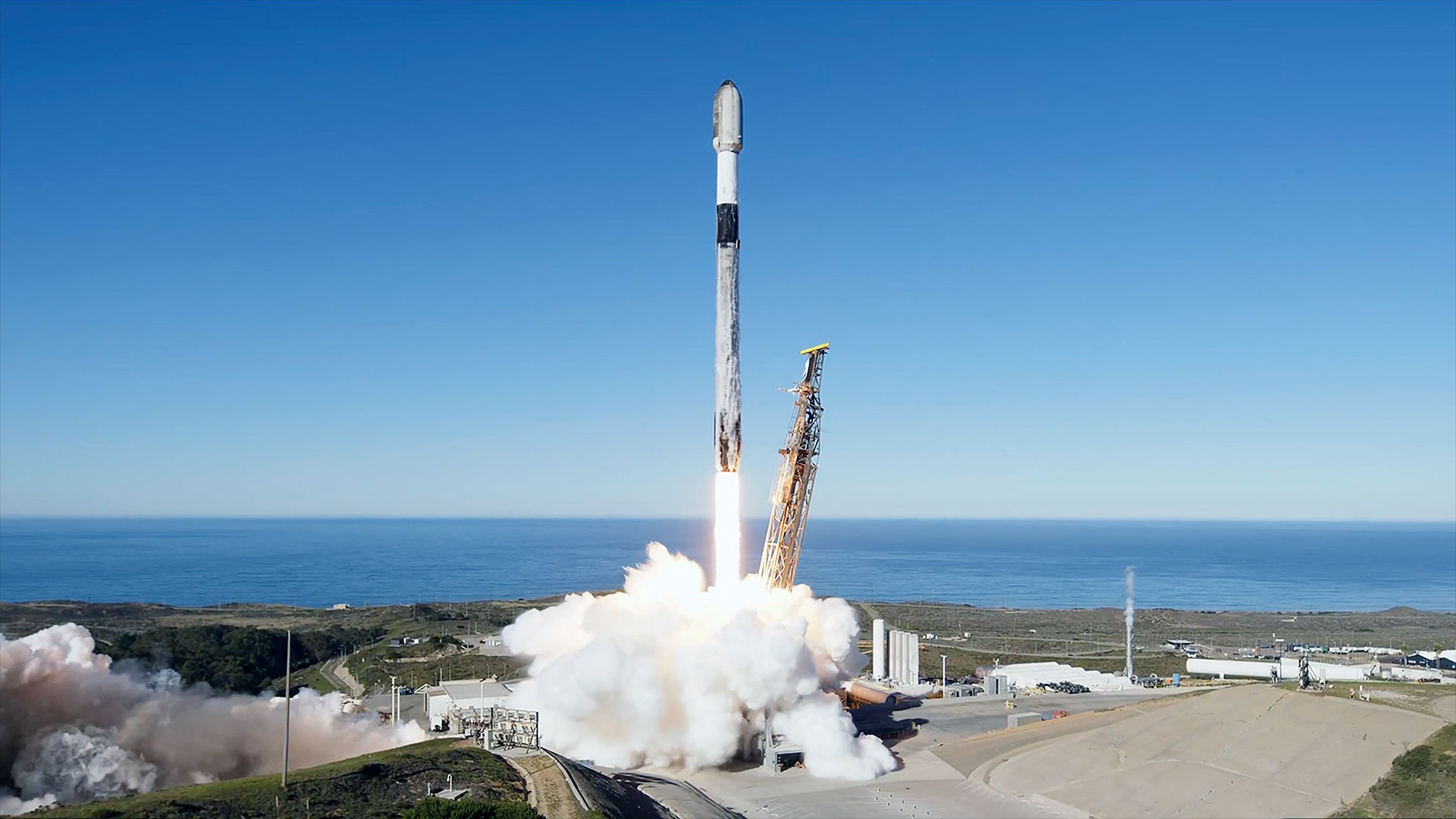Trace the Ecliptic Across the Sky

The ecliptic is the path the sun, moon, and planets take across the sky as seen from Earth. It defines the plane of the Earth's orbit around the sun.
The name "ecliptic" comes from the fact that eclipses take place along this line.
This imaginary line can best be visualized in the days just before full moon, especially when there are bright planets in the sky. This week is a fine example.
Go out under a clear sky just after sunset. In the west, just above the setting sun, you will see the brilliant planet Venus. The moon will be riding low in the east, just above the horizon. Mars, higher in the eastern sky, defines a third point on the ecliptic. A couple of hours later, Saturn will rise in the east, defining another point on the ecliptic.
Notice in the image that the moon and planets do not sit exactly on the line of the ecliptic. Although the orbits of the moon and planets are almost in the same plane as the Earth's orbit, they are all a little bit off. At the moment, Mars is slightly north of the ecliptic, and the moon and Mars are slightly below the ecliptic.
This discrepancy explains why we don't get eclipses every month. Because the plane of the moon's orbit is slightly different from the plane of the Earth's orbit, the moon usually passes above or below the sun or the Earth's shadow, except close to where the two orbits cross, and an eclipse is avoided.
This year, the orbits of the Earth and moon intersect on June 25 and Dec. 29, so eclipses can only occur within a month or so of these dates.
Breaking space news, the latest updates on rocket launches, skywatching events and more!

Geoff Gaherty was Space.com's Night Sky columnist and in partnership with Starry Night software and a dedicated amateur astronomer who sought to share the wonders of the night sky with the world. Based in Canada, Geoff studied mathematics and physics at McGill University and earned a Ph.D. in anthropology from the University of Toronto, all while pursuing a passion for the night sky and serving as an astronomy communicator. He credited a partial solar eclipse observed in 1946 (at age 5) and his 1957 sighting of the Comet Arend-Roland as a teenager for sparking his interest in amateur astronomy. In 2008, Geoff won the Chant Medal from the Royal Astronomical Society of Canada, an award given to a Canadian amateur astronomer in recognition of their lifetime achievements. Sadly, Geoff passed away July 7, 2016 due to complications from a kidney transplant, but his legacy continues at Starry Night.
